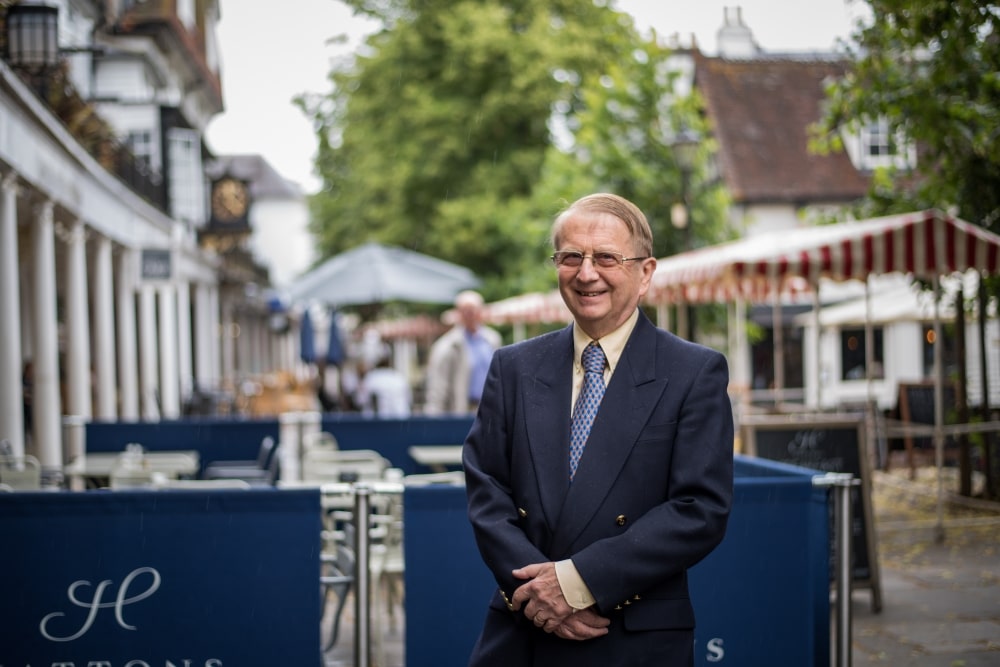The watchdog organisation that acts as conservationists for the town’s history and architecture says the Borough Council’s draft Local Plan risks turning Tunbridge Wells into ‘a commuter dormitory’.
The Royal Tunbridge Wells Civic Society, which this year marks its 60th anniversary, says the Council’s obligation to build more than 13,500 across the borough, will push up land prices and lead to a lack of affordable homes in the town.
Current chairman of the society, Brian Lippard, said: “The main problems we face are not to do with the Council leadership or with our MP, with both of whom we have good relations and regular meetings.
“We see a basic problem in the Council’s obligation to plan for large quantities of housing while their ability to decide on what and where is severely limited.
“This has the effect of pushing up land prices and enabling developers to argue they can’t afford to build affordable housing. The result is to make all housing in Tunbridge Wells more expensive, and risk making the town a commuter dormitory.”
He continued: “Regarding housing, we want to see much more affordable and social housing being built both within the town and in the borough.”
He went on to say that the ‘long term squeeze’ of Council budgets and loss of skilled and experienced staff from the Town Hall is making the Council less democratic.
He said: “We have recently discussed with the Council their difficulties in handling planning applications, and the tendency for even major applications to be decided by officers rather than the elected councillors.”
And he added that there has also been a loss of employment opportunities over the last 20 years, which too threatens the town.
“Since 2000, employment in Tunbridge Wells has remained static while the population has increased by 25 per cent. We argue for more powers for the Council to resist this, and also more use by the Council of its existing powers to improve the environment and provide infrastructure,” he argued.
Mr Lippard, explains that the group takes a specific interest in planning applications that affect the town centre.
He said: “We operate a campaigning side which is led by an Executive Committee of up to 12 people. Currently it includes two practising architects and a retired town planner, so I don’t think we lack for expertise.”
The Civic Society is not automatically opposed to all new developments – just some.
“It is sometimes said the Society is against development, but actually, we aim to strengthen the hand of the council in resisting harmful proposals,” said society chairman Brian Lippard.
He said that out of around 1,300 planning applications submitted to the council each year, the Society comment on around 100.
“We are not about preserving things for the sake of it but we feel there are certain jewels which so benefit the town that they must not be lost,” he said, adding: “The Pantiles and Common are obvious candidates. Where else can you find such delights?
“I would also add our splendid public parks and the absence of high rise buildings which would otherwise spoil the panoramic views from such vantage points as the junction of London Road and Mount Ephraim.”
He points to The Church of King Charles the Martyr, the Grade I listed building dated to1676 and was dedicated to the then reigning monarch and was the first substantial building constructed in the town.
“Only with a buoyant economy can it thrive,” added Mr Lippard. “To quote John Betjeman, we want architects to build beautifully rather than beautifying buildings. To this end, we hope developers will involve relevant groups such as the Civic Society in the early stages of their planning and design.”
Civic Society chairman Brian Lippard arrived in Tunbridge Wells around 50 years ago, and says in that time he has seen the town change for the better
“The prospect of living in a nice town, not having to commute but being near London was too great to refuse,” he said, explaining why he came in the first place.
He continued: “My conclusion when comparing Tunbridge Wells in the 1970s to now, is that it is better than it was.”
“Back in the 70s, The Pantiles was looking more and more forlorn. It took action from the council, Speyhawk [a property developer] and pressure from the Civic Society to rejuvenate the area.
“With the development of the café culture and the assistance of Target Follow, The Pantiles is now a joy to visit.
“In the town centre, the Royal Victoria Place replaced what resembled a very large bomb site. Camden Road had and still has a unique charm. I hope it continues as a group of small shops rather than reverting to residential.”
Mr Lippard has been a member of the Civic Society for nearly 30 years, but admits he has only been really active for the last few years
“It was my wife’s idea for us to join the Civic Society in 1986,” he recalled. I have to confess that it wasn’t until eight years ago that I started to pay real attention to what was happening in the town.”
Mr Lippard, who is currently writing a book on the town between 1935 and 2000, explained what the Civic Society get up when they are not looking at planning issues.
“We take part in talks, outings and have an annual summer party,” explained Mr Lippard. “We also have a small Local History Group who produce articles for our quarterly newsletter and have produced many books on both the town and prominent people who have lived and/or are buried here.”
He added for their jubilee celebrations they have produced a short booklet covering the Society’s achievements in its 60 years of existence and a copy has been given to every member.
“And at our recent annual garden party we had a special commemorative cake which was cut by the Mayor and distributed to guests,” he said.








